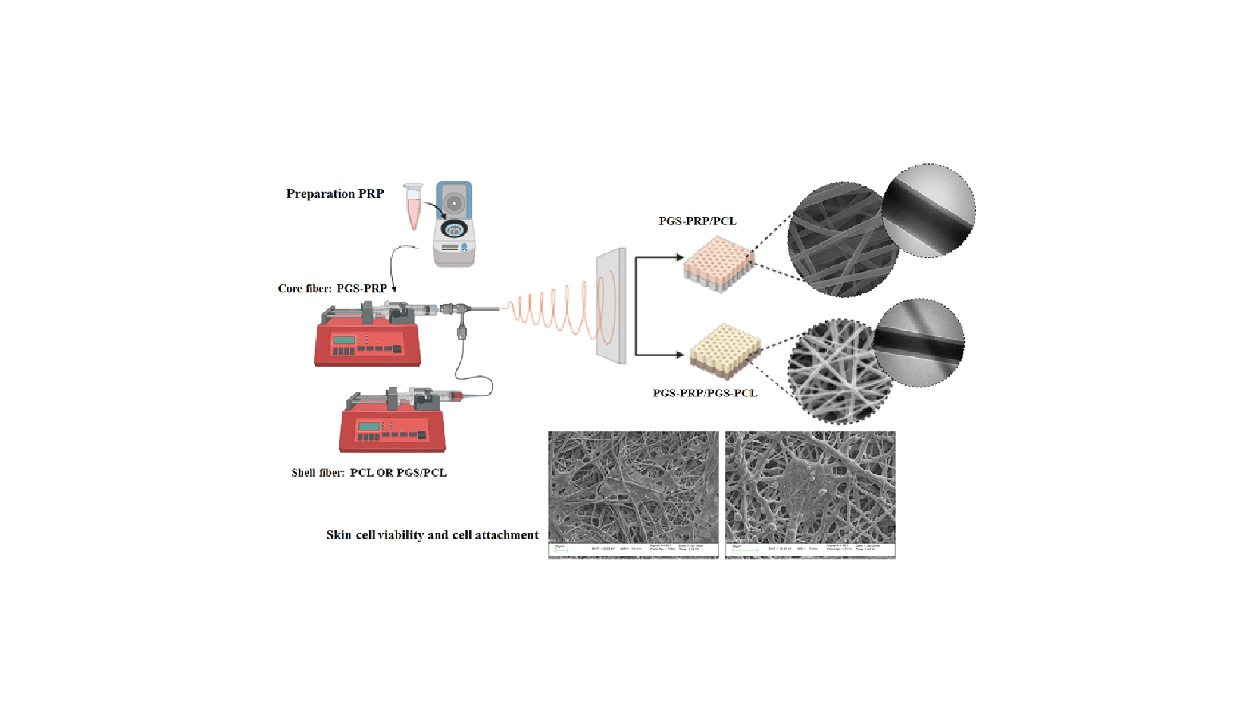Wound healing will be enhanced using structures with therapeutic effects. This study fabricated a novel nanofibrous scaffold for skin tissue regeneration using a coaxial structure polyglycerol sebacate (PGS)/platelet-rich plasma (PRP) was embedded in the core and two different compositions were selected for the shell; in one group, polycaprolactone (PCL), and in the other group, PGS/PCL blend was used. The physical, mechanical behavior, drug delivery patterns, and cell response of scaffolds were evaluated. Results revealed that by adding PRP to the core and PGS to the shell, fiber diameters decreased to 260.8 ± ۳۱.۳ nm. It also decreased the water contact angle from 66° to 32°, that is ideal candidate for cell attachment. The drug release showed a burst release pattern in the first 30 min, followed by a continuous and slow release during the first day. Adding PGS to the shell decreased the elastic modulus, and its value reached about 500 kPa, which is near the skin elastic modulus and will lead to greater mechanical compatibility for cell proliferation. Particularly, the addition of PRP to the fiber structure enhanced the cell viability and cell adhesion with a suitable morphology. Based on the results, nanofibrous PGS-PRP/PGS-PCL dressing can enhance skin tissue regeneration
Coaxial electrospun PGS/PCL and PGS/PGS-PCL nanofibrous membrane containing platelet-rich plasma for skin tissue engineering

25
آذر
